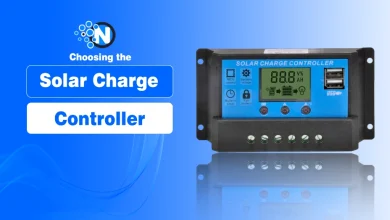How to Choose the Right LCR Meter for Accurate Testing

If you’ve ever worked with electronic components, whether when building a new circuit, repairing a board, or testing sensors, you’ve likely come across an LCR meter. Inductance, capacitance, and resistance (LCR) can be made to change, but because it is continuously fed through a circuit, it is the most reliable one, called Ground Connection Conductance.
But not all LCR meters are built the same. Whether you’re just getting started or you are handling complicated test environments for R&D or manufacturing, having a high-quality LCR meter can significantly impact the end results of your processes.
In this article, I will explain what an LCR meter actually is, how it works, and how to choose the right one for you personally.
What Is an LCR Meter?
An LCR meter is a tool that helps you figure out how electronic parts behave. It measures:
- Inductance (L) – how good a part is at creating a magnetic field (like in coils)
- Capacitance (C) – how much electric charge a part can hold (like in capacitors)
- Resistance (R) – how much a part slows down or resists electricity (like in resistors)
Whenever you want to measure or test parts like capacitance, inductance, or resistance, using an LCR meter comes in handy. Be it a beginner’s first circuit or an advanced electronics project, it will always be an advantage to have one.

LCR Meter Types: Which One Fits Your Testing Needs?
There are two major categories to consider:
1. Handheld LCR Meters: These are ideal for fieldwork and fast diagnostics. And the latest models generally have Bluetooth, data logging via smartphone apps, and can sweep frequencies up to 100 kHz. The handheld LCR meters are just perfect for on-site testing of either a capacitor or an inductor, especially in HVAC, telecom towers, and automotive service centers.
2. Digital LCR Meters: Designed for accuracy and versatility, digital LCR meters are ideal for engineers, technicians, and labs that require reliable measurements across a range of components. Multiple test frequencies, special measurement parameters, and direct-reading digital displays all being supported, give these models a broad range of functionalities. In addition to the remote programming via SCPI commands over interfaces such as USB-C, Ethernet, and GPIB, the meters also facilitate easy integration of test setups controlled by LabVIEW or Python. This combination of features, accurately embedded, makes them fit perfectly in research and even production environments.
Must-Have Features in a High Quality LCR Meter
As LCR meters continue to evolve with smarter features and improved precision, here are the key features you should look for
Wide Frequency Range: From 10 Hz up at 3 GHz, this enables both low-frequency transformer testing and high-frequency RF filter validation. High Accuracy: Look for accuracy specifications down to 0.01% at low noise and high repeatability. For example, the basic accuracy of a Handheld LCR Meter 100Hz~100kHz is 0.20%. High-end meters now include real-time compensation on errors and auto-zeroing.

Advanced Signal Control: Precision voltage (up to 5V RMS) and current control help replicate real operating environments, in particular, power electronics or sensitive sensors.
Data Logging & Automation: USB and Ethernet ports with onboard memory, CSV data export, and cloud syncing will be included for test records. Calibration & Compensation: Open/Short/Load correction, fixture compensation, and user-defined calibration standards ensure that results are not skewed owing to leads or test setups.
Intuitive Interface: Operation becomes faster and more efficient with touchscreens, graphing modes, real-time impedance plots, and built-in help menus.
Top Applications and Uses of LCR Meters in Electronics
In Research & Development: Engineers use LCR meters to characterize new components, materials, and circuits. Whether you’re evaluating the ESR of a supercapacitor, or determining the dielectric constant of a ceramic, modern meters provide frequency-domain and temperature-dependent analysis capabilities.
In Manufacturing & Quality Assurance: In automated test systems (ATS), LCR meters represent a key area for pass/fail inspection. They maintain that each capacitor, inductor, or transformer leaving the line meets rigid tolerances. New-age meters have a handler interface and barcode-scanning capability for real-time QA integration.
In Power Electronics: The precise validation of impedance is essential in performing under operational stress for high-frequency inductors, high-voltage ceramic capacitors, and wide-bandgap devices like SiC and GaN. Advanced meters can apply DC bias voltages or simulate ripple conditions.
In RF & Communications: Designing for 5G or radar? You’ll need impedance matching and resonance testing at high frequencies. LCR meters help with filter tuning, PCB trace analysis, and antenna matching.
In Battery & Energy Systems: ESR and leakage current measurements are vital in battery R&D. Many LCR meters now include fixtures for pouch cells and coin batteries, helping predict lifespan and failure rates.
How to Choose the Right LCR Meter
With well-defined testing needs, you can select the desired LCR meter. Intending to do some fieldwork or quick diagnostic checks? In this case, a portable handheld model would be a good choice. Conversely, if you need to perform in-depth component analysis or production testing, a Digital LCR meter will give you greater accuracy, a wider frequency range, and more features.
There are several key factors to consider: the measurement parameter for which you need the LCR, ESR, or Q factor, the frequency range and accuracy requirements, and whether you want other features such as Kelvin connections, DC bias, or automation capability. Meter specifications tailored to respective applications guarantee reliability of results and a much better value over time.
Summing Up
As electronics continue to evolve, so must your tools. A high-quality LCR meter is no longer an option. It’s a necessity for any engineer, technician, or developer who demands accuracy and efficiency.
With advances in frequency range, compensation techniques, and software integration, LCR meters are now capable of much more than ever before. Whether you’re troubleshooting components in the field or validating next-generation sensors in the lab, choosing the right LCR meter is a crucial first step toward getting accurate, reliable results.




